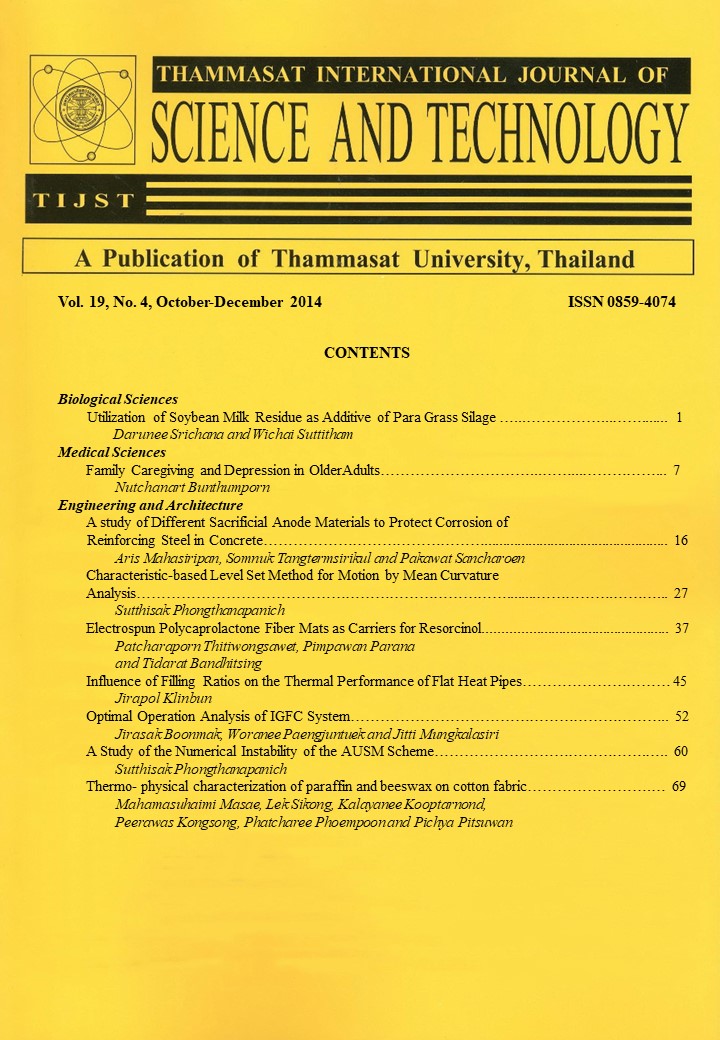A study of Different Sacrificial Anode Materials to Protect Corrosion of Reinforcing Steel in Concrete
##plugins.themes.bootstrap3.article.main##
摘要
Re-deterioration of corroded RC structures after patching repair is one of the most important problems in marine environment. The different in chloride content, electrical resistivity of material, and environmental condition cause rapid corrosion of reinforcing steels both in original concrete and repaired zones. A sacrificial anode is a possible solution to prevent this problem. The effects of the concrete mix proportion, the types of sacrificial anodes and the level of chloride content in concrete on the effectiveness of corrosion protection of reinforcing steels by sacrificial anodes were studied. Ordinary Portland cement (OPC) type 1 was used as a binder with water to binder ratios of 0.4, 0.5 and 0.6. Zinc alloy and Aluminum alloy were used as sacrificial anodes to study their effectiveness with respect to both the current densities distribution and the electrical potential of steel surface at different distances from the location of the sacrificial anodes. The results showed that the water to binder ratio did not affect the performance of sacrificial anodes significantly due to the wet and high chloride content of concrete. The results can be used for preparing a guideline to design the sacrificial anode system to prevent corrosion of reinforcing steels. The factor to be considered include the service life, the required weight of anode and the location of the installation based on service conditions of the RC structure.
Keywords: Corrosion; Cathodic Protection; Sacrificial anode; Reinforcing Steel; Repair; Maintenance.


